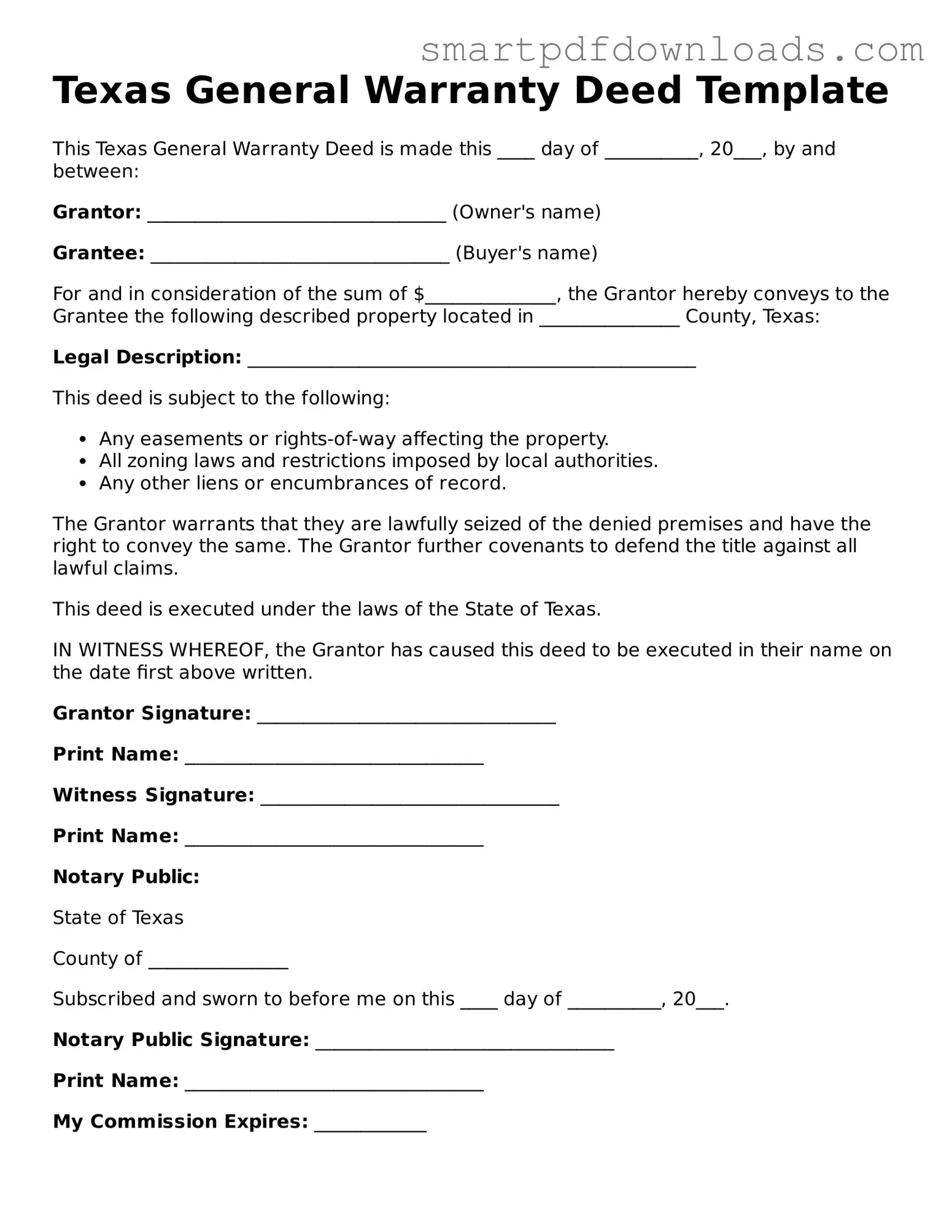Texas General Warranty Deed Template
This Texas General Warranty Deed is made this ____ day of __________, 20___, by and between:
Grantor: ________________________________ (Owner's name)
Grantee: ________________________________ (Buyer's name)
For and in consideration of the sum of $______________, the Grantor hereby conveys to the Grantee the following described property located in _______________ County, Texas:
Legal Description: ________________________________________________
This deed is subject to the following:
- Any easements or rights-of-way affecting the property.
- All zoning laws and restrictions imposed by local authorities.
- Any other liens or encumbrances of record.
The Grantor warrants that they are lawfully seized of the denied premises and have the right to convey the same. The Grantor further covenants to defend the title against all lawful claims.
This deed is executed under the laws of the State of Texas.
IN WITNESS WHEREOF, the Grantor has caused this deed to be executed in their name on the date first above written.
Grantor Signature: ________________________________
Print Name: ________________________________
Witness Signature: ________________________________
Print Name: ________________________________
Notary Public:
State of Texas
County of _______________
Subscribed and sworn to before me on this ____ day of __________, 20___.
Notary Public Signature: ________________________________
Print Name: ________________________________
My Commission Expires: ____________
